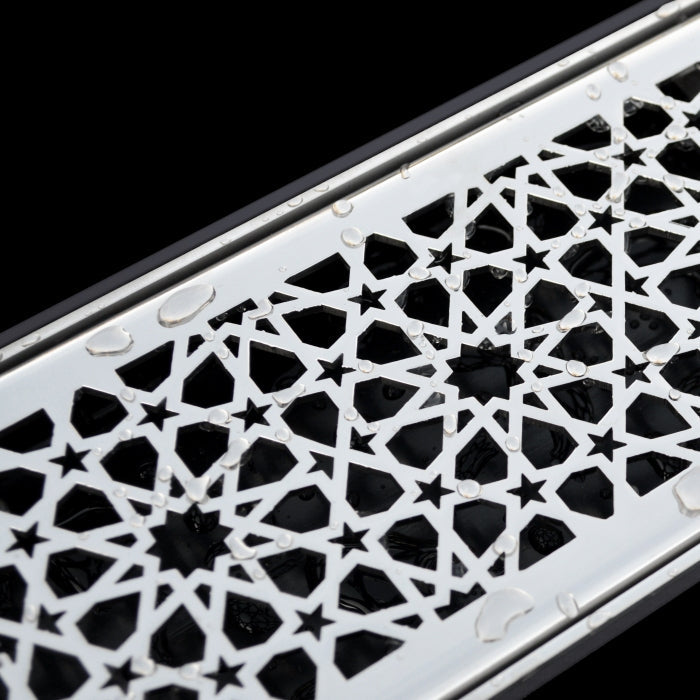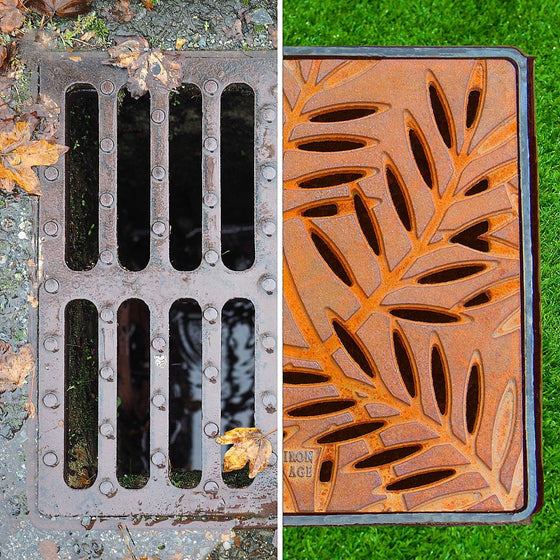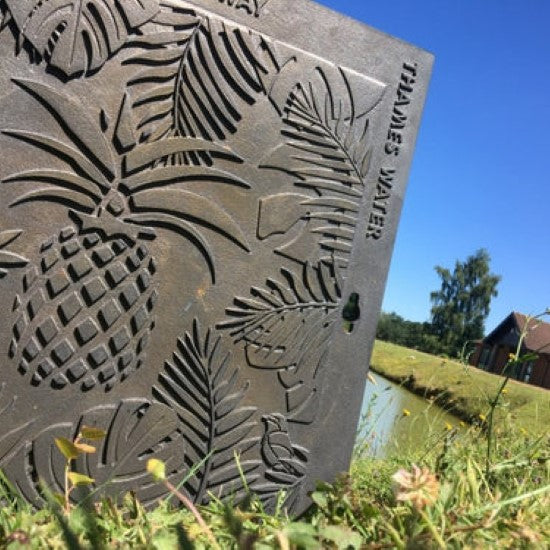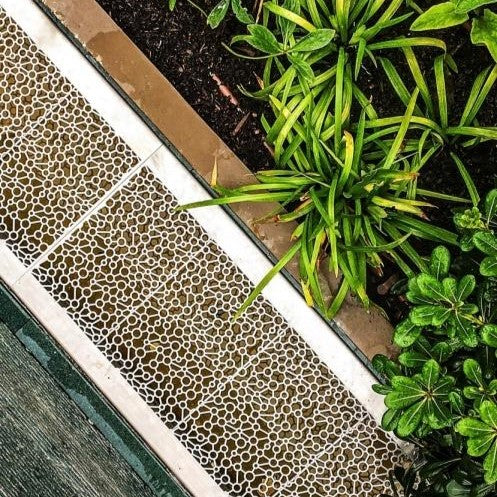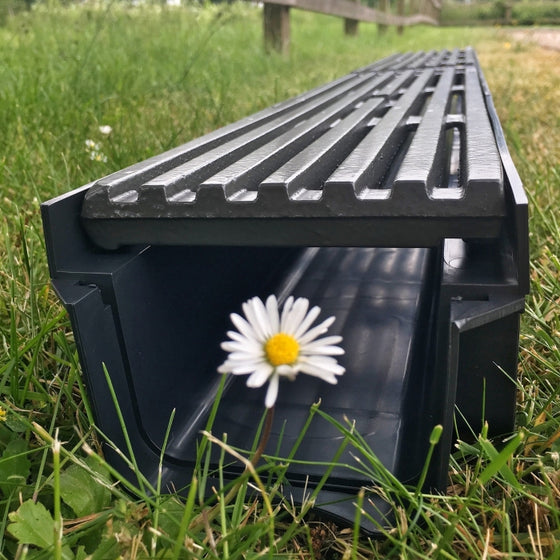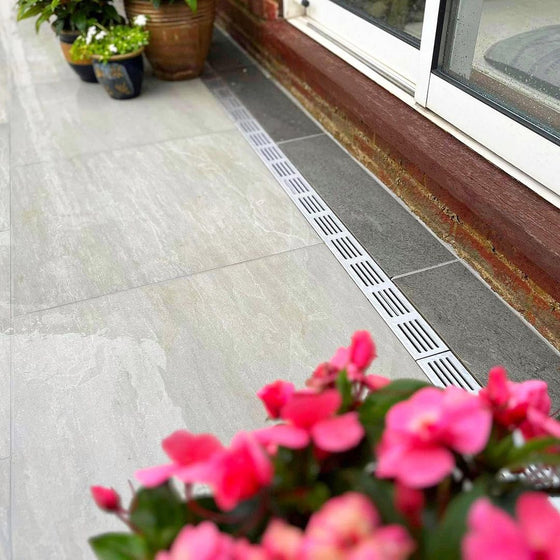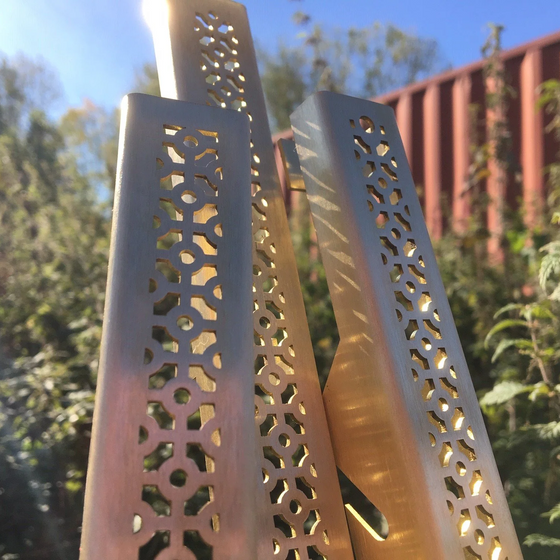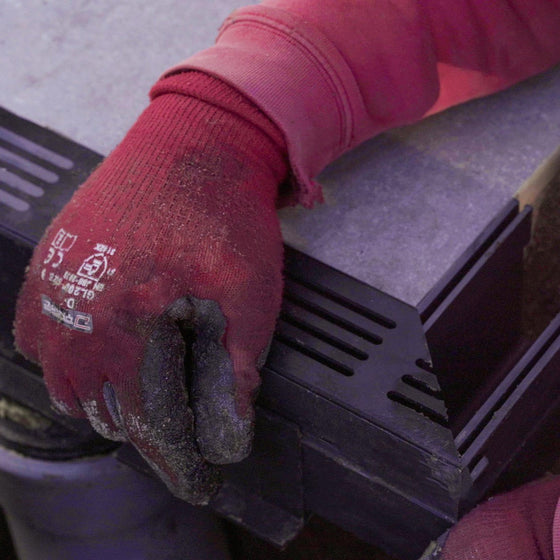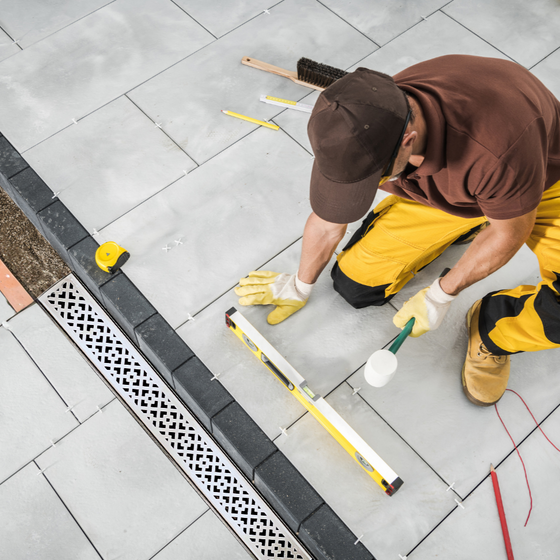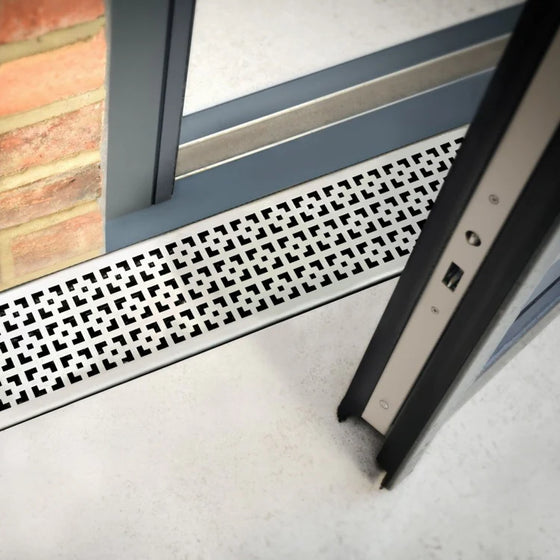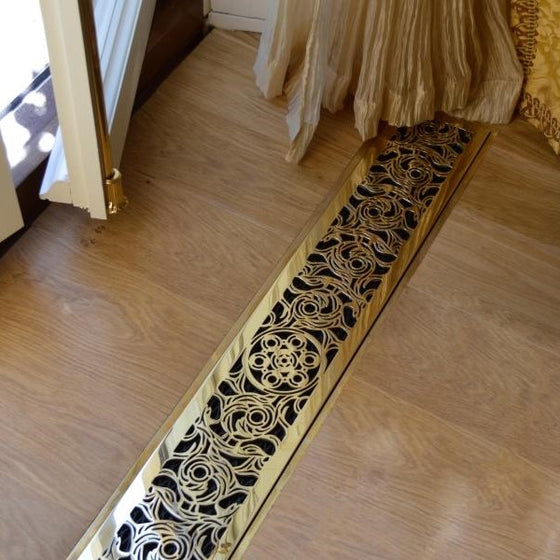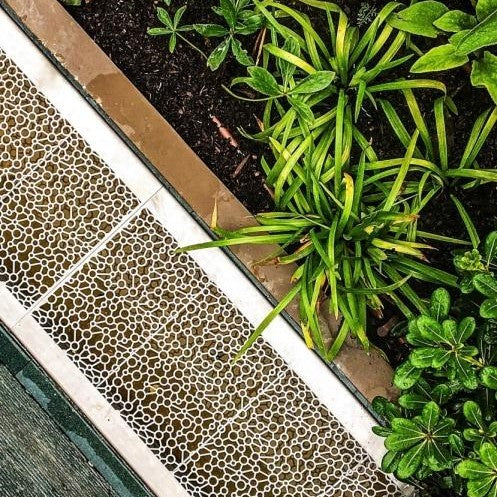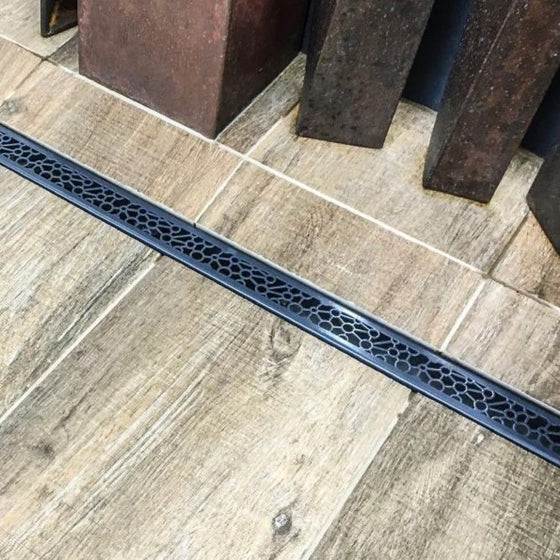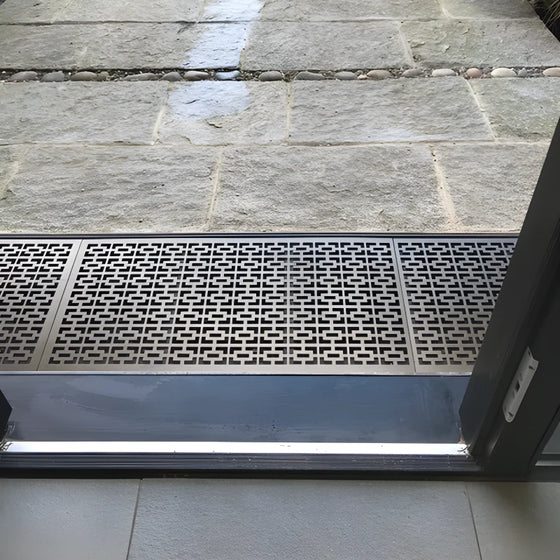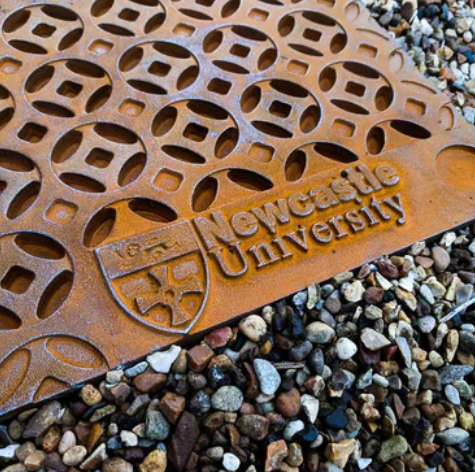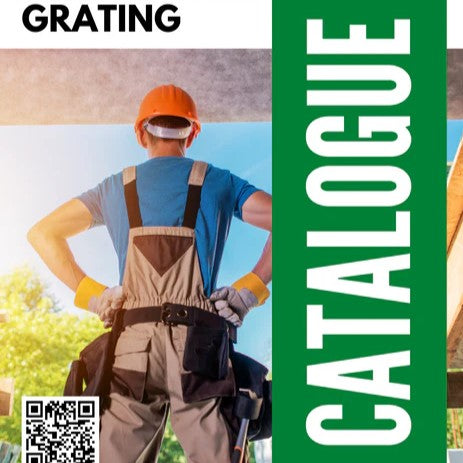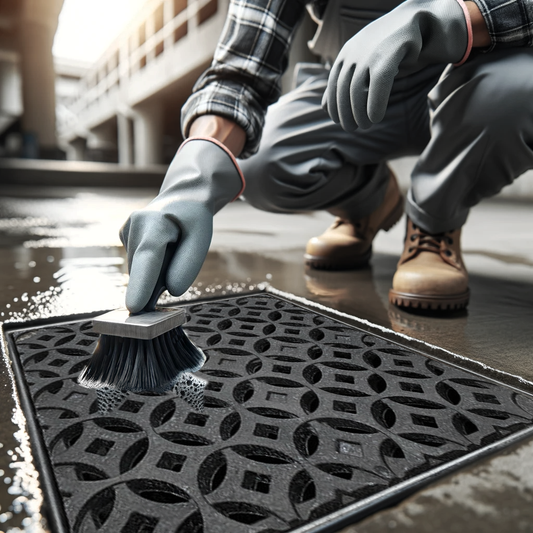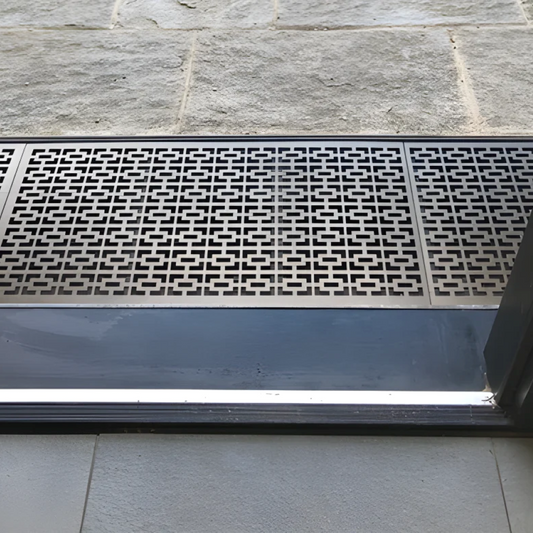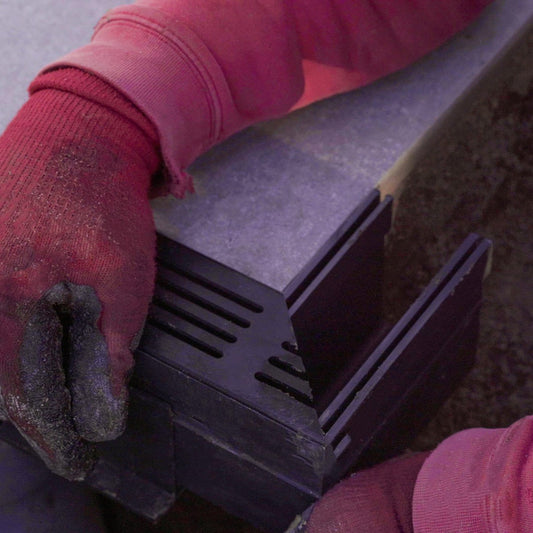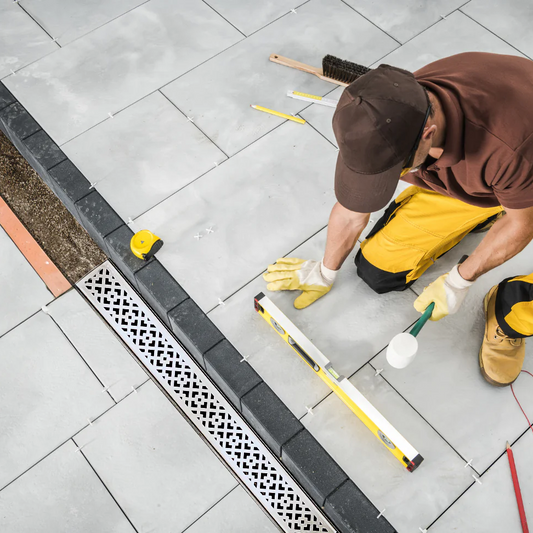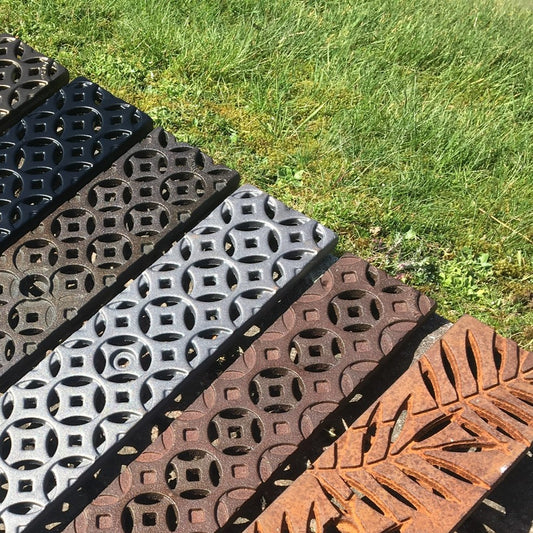Contact Us
Send Us A Message
-
Our Address:
Lateral Design Studio Ltd
Unit 4 Double Arches Business Park
Eastern Way
Heath & Reach
Bedfordshire LU7 9LF - T. +44 (0) 20 8450 2244
-
E. info@lateraldesignstudio.co.uk
1. Channel Maintenance
Our drainage channels are designed for minimal maintenance, but an attention to detail can significantly extend their lifespan and functionality:
Debris Management: Regularly inspect the channel for debris, including leaves, twigs, or pebbles, and use a broom, shovel, or dustpan to remove them. For stubborn debris, employ a drainage hook or a robust clothes hanger to ensure unobstructed water flow.
Thorough Flushing: Employ either a garden hose or a pressure washer to systematically flush out residual debris or silt from the channel. This step is instrumental in preventing blockages and ensuring efficient drainage.
2. Stainless Steel Covers
Stainless Steel covers are renowned for their durability and corrosion resistance. A comprehensive maintenance regimen ensures their long-lasting allure:
Lifting the Cover: Gently lift the drain cover from the drain unit, taking care not to damage any surrounding elements.
Cleaning Routine: Clean the drain cover meticulously, utilising only a soft cloth or a soft-bristled brush soaked in mild, non-abrasive soap and lukewarm water. Steer clear of abrasive materials such as steel wool, which can mar the surface.
Polishing: Delicately polish the drain cover, following the brushed grain's direction. This practice preserves its exquisite finish and aesthetic appeal.
Combatting Lime Deposits: Should lime deposits surface, rely on common household descaling agents. Allow the product to work its magic for a few minutes before thoroughly rinsing with clean water. Avoid commercial cleaning products containing corrosive chemicals or bleach.
Corrosion Management: Stainless steel's remarkable resistance to corrosion hinges on its protective chromium oxide layer. It is imperative to steer clear of potent acids or chemicals like iodine, chlorine, fluorine, or bromine, which can compromise this protective layer and induce corrosion. Consistent cleaning is the key to warding off rust.
Handling Etched Products: For items featuring laser etching, ensure that you clean in alignment with the grain to maintain their pristine appearance.
3: Cast Iron Covers
Cast Iron covers, while undergoing a natural oxidation process or rusting, can be preserved with a specific care regimen:
Understanding Oxidation: Cast Iron covers may exhibit some oxidation upon arrival. This initial stage initiates the creation of a protective Passivation Layer, which significantly slows further oxidation.
The Patina Formation: The Passivation Layer, often referred to as a Patina, imparts a distinctive chocolate brown hue to cast iron covers over time.
The Patina Evolution: The oxidation process evolves from a bright orange tint to a rich chocolate brown. Depending on environmental factors, this transformation may take approximately a year, culminating in covers that resemble traditional cast iron manhole covers.
Traffic-Induced Changes: Cast Iron covers in high-traffic areas may acquire a burnished appearance over time; however, unlike steel, they do not flake away, ensuring prolonged durability.
Protective Treatment: If your covers have been pre-rusted and treated by Lateral Design Studio, rest assured that the rusting process has been effectively halted, guaranteeing their timeless condition.
Maintaining your drainage covers and channels is an art form that requires precision and dedication. By meticulously adhering to these maintenance guidelines, you can relish your products for an extended period while preserving their aesthetics and functionality. Remember, overlooking maintenance can jeopardise the product's long-term integrity. For further inquiries or tailored support, please feel free to contact our dedicated customer service team.
In the realm of architectural innovation, there exists a German phenomenon known as the "Huf Haus." These stunning structures represent the perfect blend of contemporary design, sustainable living, and meticulous craftsmanship. To harmonise with the Huf Haus's unique construction requirements, Lateral Design Studio were tasked with a project to create and craft a custom-made stainless steel drainage grate and frame featuring our popular "Geo-Rectangular" pattern. A solution that would not only meet their strict perimeter building construction standards, but also provide easy access into the home, whilst enhance the aesthetic appeal of these exceptional homes.
What is a Huf Haus?
A Huf Haus is a type of prefabricated house of German origin, characterised by its distinctive post-and-beam construction and floor-to-ceiling glass facades. These remarkable homes are often built in harmony with nature, embracing energy-efficient design principles and sustainable materials. Each Huf Haus is a testament to precision engineering, and they are renowned for their modern aesthetics and minimalistic elegance.
Meeting Strict Perimeter Building Requirements
Huf Haus designs are not only aesthetically impressive but also known for their stringent Huf Haus building code. These codes often include specific requirements for continuous clear drainage troughs around the perimeter of the house, which is where our beautiful custom-made stainless steel drainage grates and frames come into play.
The "Geo-Rectangular" pattern on our drainage grate was specifically designed to complement the clean lines and geometric precision that are hallmarks of Huf Haus architecture. This pattern, characterised by a series of rectangles and shapes, adds an extra layer of sophistication to the exterior of these already striking homes.

One of the primary challenges faced during the construction of Huf Haus homes is ensuring that the construction drainage detailing seamlessly integrates with the architectural design. The wider and more intricate "Geo-Rectangular" pattern of our custom-made stainless steel drainage grate was created to not only enhance the aesthetic appeal but also to efficiently manage rainwater flow while providing easy access. This wider grille provides a more substantial surface area for water to pass through, reducing the risk of blockages and overflow during heavy rain, a common issue in regions with high precipitation.
The Benefits of Our Stainless Steel Drainage Grates
Aesthetic Appeal: The "Geo-Rectangular" pattern is a visually appealing addition to the exterior of Huf Haus homes, blending seamlessly with their architectural style.
Compliance with Regulations: Our drainage grates meet and exceed their strict perimeter building requirements, ensuring that water is efficiently managed without compromising the structural integrity of the house.
Durability: Crafted from stainless steel, this drainage grate is built to last, with a resistance to corrosion and wear, making it an excellent long-term investment for homeowners.
Efficient Drainage: The wider design of the grate allows for effective water drainage, reducing the risk of water accumulation, which can lead to structural damage over time.
Customisation: Each drainage grate is custom-made to fit the specific requirements of each Huf Haus project, ensuring a perfect fit and function and can have special powder coating finishes applied if required.

The Duration of the Oxidation Process
The duration of the oxidation process is influenced by the environmental conditions to which the grates are exposed. Generally, this process can last anywhere from a few months to a year. It is essential to bear in mind that the pace of transformation is accelerated in areas with higher traffic and greater exposure to various weather elements.
Longevity and Durability of Cast Iron Grates
Cast iron has stood the test of time, having been employed for centuries in the fabrication of items that require exceptional durability and resistance to corrosion. Notably, cast iron has been the material of choice for manufacturing ship anchors traditionally used by the Navy. In a raw state, our grates, like those anchors, boast a lifespan of several decades.
Alternative Options to Avoid the Orange Oxidation Phase
While we generally advocate allowing our grates to age naturally and develop their distinct patina, we understand that some individuals may prefer to bypass the bright orange oxidation phase of raw iron. For such cases, we offer an eco-friendly Baked-On-Oil Finish that utilises recycled vegetable oil. It is an aesthetic treatment that creates an aged look. As the oil wears off it will provide a smooth,
graceful transition from installation to final patina.
Alternatively we can provide a powder coating service, a metal finishing process that allows the product to be textured in almost any RAL colour or shade you require. This long-lasting, highly durable and economical finish will be more resistant against scratches, chipping, wear, and fading.
Preventing Staining of Surrounding Areas
The issue of rust staining the surrounding area can be mitigated if your grates are installed in a pre-formed drain body or our custom frames. These drain bodies and frames incorporate materials such as plastic, metallic, or polymer edges, as well as steel edges in the case of our frames. Consequently, this prevents direct contact between the iron grates and the surrounding surface. As long as the drain functions correctly, any rust particles will be efficiently channeled down the drain with the water flow.
There exists a pervasive misconception perpetuated by certain drain suppliers and embraced by landscapers, which suggests that a straightforward uniflow channel drain can be installed at the junction where the external paving meets the door threshold and the internal building structure. This assumption asserts that such drains can be fitted at any level, regardless of the existing DPCs/DPMs. However, it is crucial to clarify that this notion is incorrect and poses a significant risk.
Moreover, there is a common misunderstanding regarding Part M building regulations and disabled access. It is important to note that these regulations do not govern the installation, integration, or construction of drainage at the aforementioned junction. Their sole purpose is to ensure the presence of a level surface, facilitating wheelchair movement.
The height at which the top of the drain cover (level) is set in relation to the internal and external levels directly influences the necessity for meticulous detailing and enhancement of the DPC barriers, both horizontally and vertically. Furthermore, selecting the appropriate drain for this location becomes paramount.
When dealing with a stepped threshold, a simple uniflow channel drain can be employed to collect water from the paved surfaces surrounding the drain. However, in the case of a flush level, or nearly flush door threshold, it is imperative to utilise a dualflow drain. This type of drain collects water from two sources: the paved area and, more importantly, the water that exits the fenestration/door track system through the weep holes or the bullnose threshold.
It is essential to highlight that if a simple uniflow drain is used instead of a dualflow drain system in this specific location, the individual responsible will be held liable for any resulting damage. This holds true regardless of whether a signed waiver is in place or not.
Companies that claim simple channel drains can be utilised at this location, irrespective of its name, for flush level access requirements are misleading and fail to fully elucidate the actuality and consequences of such a choice. They rely on the limited knowledge of landscapers regarding the precise reasons why a drain is necessary in relation to the building's structure.
We hope this information proves beneficial to all landscapers.
Flush threshold and patio uniflow drainage offers a winning combination of practical functionality and aesthetic appeal. Its efficient water management, safety benefits, easy maintenance, and design versatility make it an ideal choice for various architectural and domestic landscape projects. By seamlessly integrating into the overall design concept, flush threshold drainage systems enhance the visual appeal of spaces, creating harmonious and aesthetically pleasing environments.
OUR UNIFLOW RANGE
Uniflow drains, are simple channel drains that collect water from only one source, that being the adjacent paved surfaces and not the water from door thresholds.
Our meticulously designed flush threshold drain system combines discreetness and decorative appeal, providing an optimal solution for diverse applications. Its flexible nature allows for effortless adjustments, ensuring seamless integration in any setting.
Experience the convenience of quick and trouble-free installation, enabling you to swiftly finalise your project. To enhance the visual allure, our system offers a splendid assortment of removable top gratings crafted from premium materials, including aluminum, corten steel, and stainless steel. Each option can be further enhanced with a variety of decorative finishes, allowing you to effortlessly harmonise with your surrounding environment.
Efficient Water Management
Our threshold drainage effectively manages water flow, diverting it away from critical areas such as doorways, entrances, and other vulnerable points. By preventing water ingress, it helps maintain the integrity of structures and protects against potential damage caused by water accumulation. A range of connectivity accessories are available to connect spigot outlets to Ø110mm drain systems.
Safety and Accessibility
The threshold drainage system eliminates the presence of hazardous water pooling, ensuring safe passage for pedestrians and reducing the risk of slip and fall accidents. It offers a level surface adjacent to door thresholds, making it wheelchair-friendly and compliant with accessibility standards.
Easy Maintenance
The design of our threshold drainage system facilitates easy maintenance. Debris and contaminants can be easily removed from the surface, preventing clogging and ensuring the system's efficient functioning. This saves time and reduces the need for frequent maintenance interventions.
Sleek and Minimalistic Design
With its ability to seamlessly blend into surrounding hardscape and landscape elements, our threshold drainage contributes to the overall coherence of your application. It can be integrated into gardens, pathways, and outdoor living spaces without detracting from the natural beauty of the environment.
Versatility
Our threshold drain grates can be customised to suit various architectural styles and design preferences. With a wide range of materials, finishes, colours, and grate options available, our threshold systems seamlessly integrate into different environments, from traditional to contemporary.
Visual Continuity
By effectively hiding drainage elements, by the use of our grate styles, materials and colour options, our threshold drain offering ensures visual continuity and uninterrupted aesthetics. It allows designers to create uncluttered and visually pleasing spaces without compromising the drainage functionality.
Your driveway is an important part of your home's exterior, and improving it can increase not only its curb appeal but also its functionality and safety. Whether you want to create a better parking space, enhance the look of your home, or prevent rainwater from pooling, there are several steps you can take to improve your driveway. In this guide, we will walk you through the process of evaluating your driveway's current state, determining your goals, choosing the right materials, considering drainage solutions, and hiring a professional if needed. With this step-by-step tutorial, you can transform your driveway and increase the value of your home.
Step 1: Evaluate the current state of your driveway
Take a walk around your driveway and check for any damage such as cracks, potholes, or uneven surfaces. You should also take note of any areas where rainwater tends to pool, as this could indicate a drainage issue. Addressing any existing issues will ensure that your new driveway improvements last longer.
Step 2: Determine your goals
Think about why you want to improve your driveway. Do you want to increase its functionality by making it easier to park or turn around? Do you want to add curb appeal to your home by making the driveway look more attractive? Or do you want to accomplish both? Knowing your goals will help you decide what improvements to make and how much to budget for them.
Step 3: Decide on a budget
Once you have a clear idea of what you want to achieve, you need to determine how much you can afford to spend on your driveway improvement project. The cost will depend on the materials you choose, the extent of the improvements you make, and whether you hire a professional or do it yourself.
Step 4: Choose the right materials
The material you choose for your driveway will impact both its appearance and longevity. Popular options include concrete, asphalt, gravel, and pavers. Concrete and asphalt are both durable and long-lasting but may require more maintenance. Gravel is a budget-friendly option but may not be as easy to maintain. Pavers offer a range of design options but can be more expensive. Consider your budget, maintenance preferences, and desired look when choosing your driveway material.
Step 5: Consider drainage solutions
Rainwater pooling on your driveway can cause damage and create a safety hazard. A drainage solution such as a linear drain cover can help prevent this issue. These covers can be made from a variety of materials, including cast iron, stainless steel, corten, natural stone, or plastic. Lateral Design Studio offers a range of attractive and eye-catching linear drain covers that can enhance the look of your driveway while preventing water pooling.
Step 6: Hire a professional
Depending on the extent of the improvements you wish to make, you may need to hire a professional to ensure the job is done correctly. Look for a reputable contractor who has experience with driveway improvements and can provide references. A professional can help you assess your needs, recommend the right materials, and ensure that the project is completed on time and within budget.
In summary, improving your driveway involves evaluating its current state, determining your goals and budget, choosing the right materials, considering drainage solutions, and hiring a professional if necessary. By following these steps, you can improve the functionality and curb appeal of your driveway and increase the value of your home.
